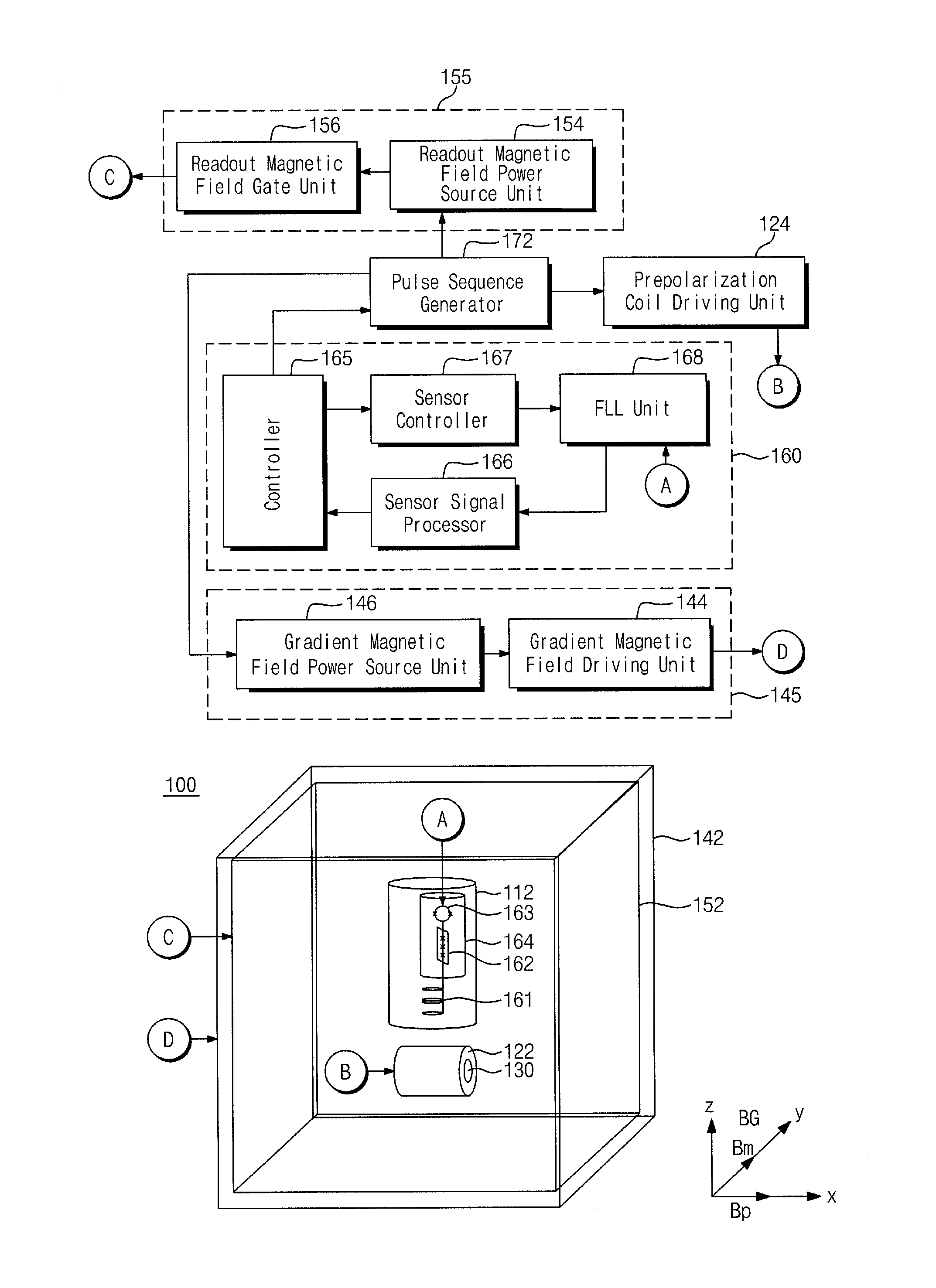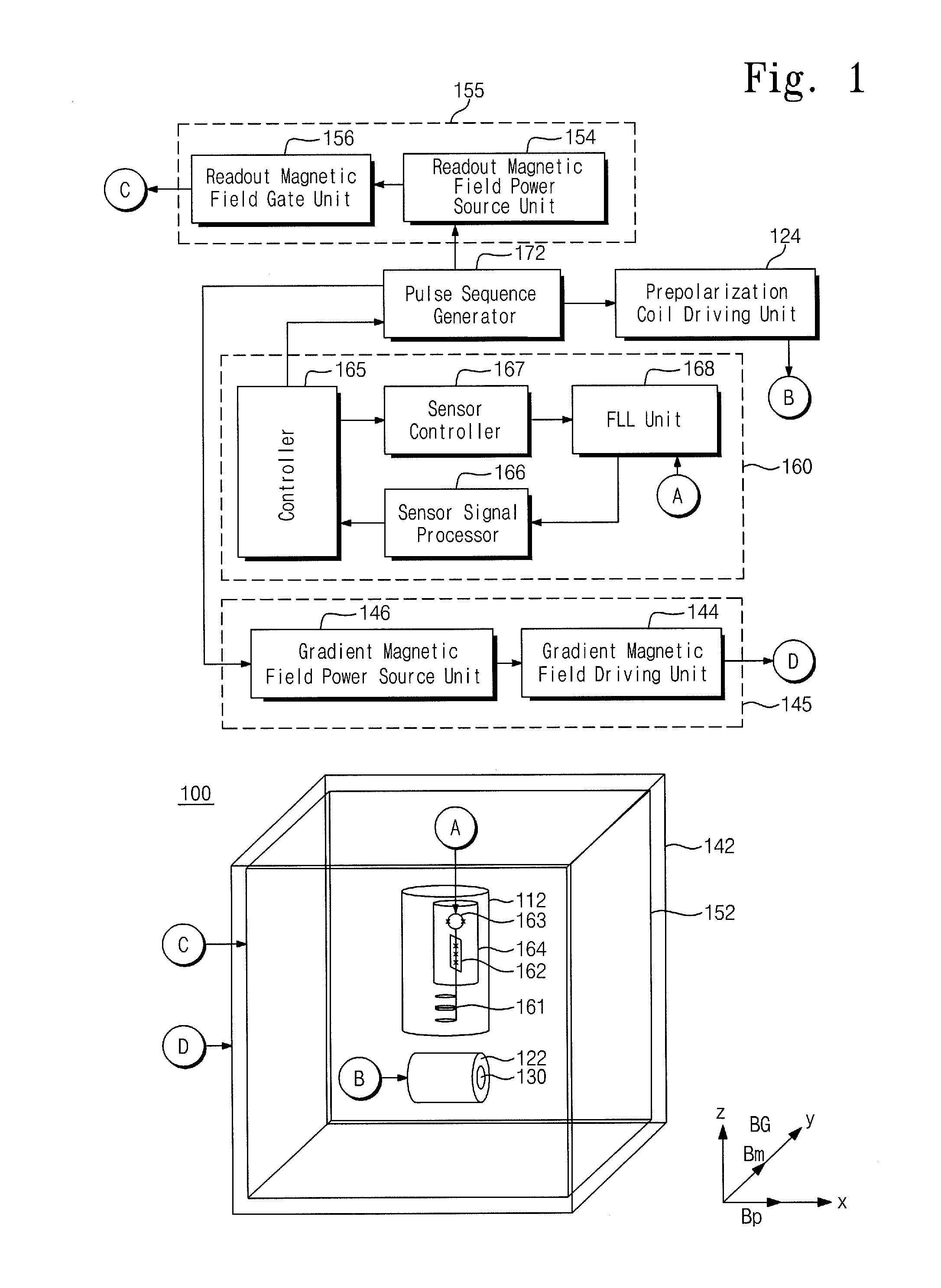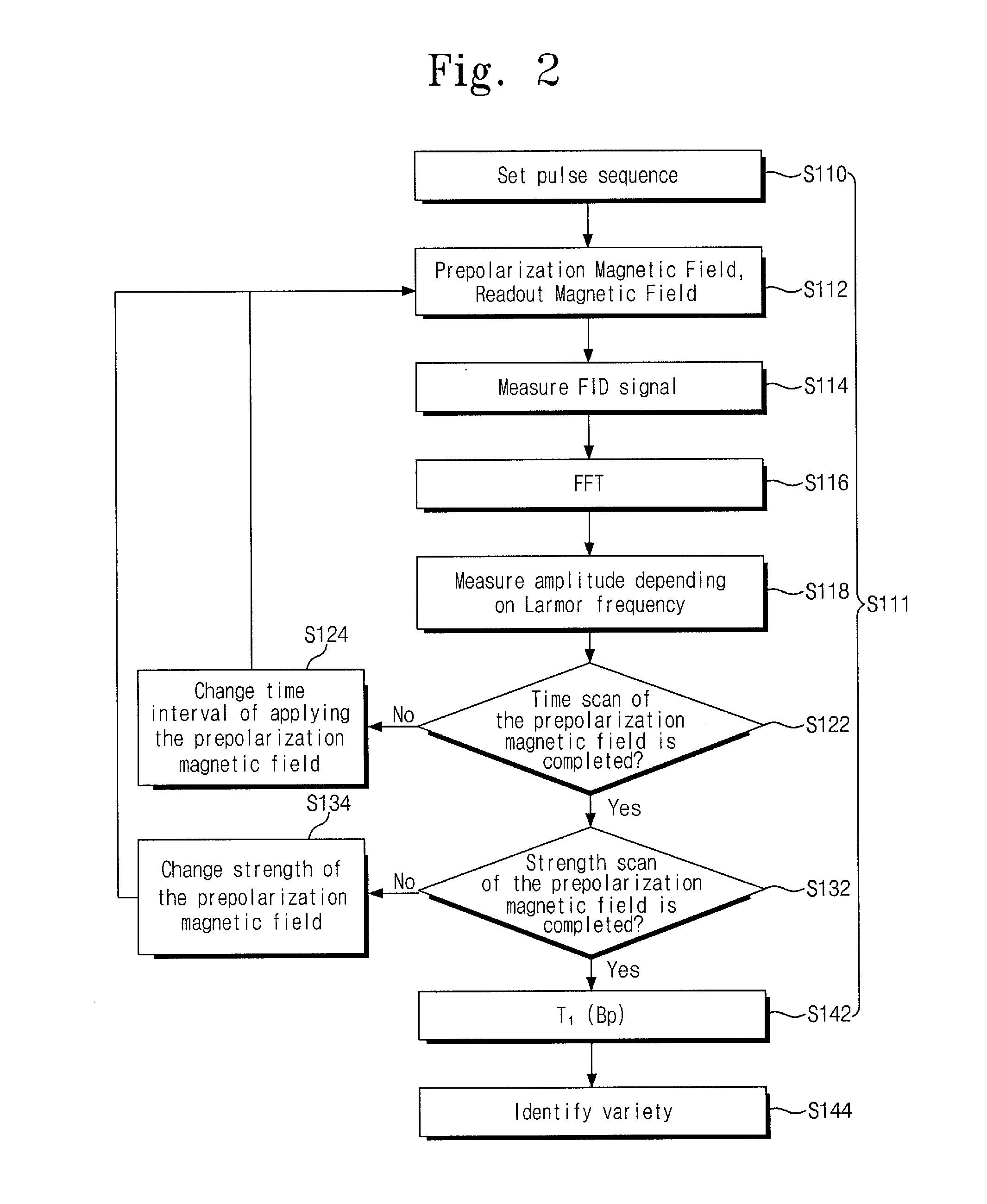Object discrimination method using ultra-low magnetic field nuclear magnetic resonance and an object discrimination apparatus of the same
a nuclear magnetic resonance and object discrimination technology, applied in nuclear magnetic resonance analysis, measurement using nmr, instruments, etc., can solve the problems of large volume of superconducting main magnets generating magnetic fields and high cos
- Summary
- Abstract
- Description
- Claims
- Application Information
AI Technical Summary
Benefits of technology
Problems solved by technology
Method used
Image
Examples
Embodiment Construction
[0035]In a conventional high magnetic field NMR / MRI, an MR signal is a signal generated by a hydrogen nucleus and an image is displayed depending on an H nucleus concentration of water molecules in a human body. Therefore, a magnetic resonance image indicates a spatial concentration of the hydrogen nucleus. In the high magnetic field NMR / MRI, T1 is a spin-lattice relaxation time and T2 is a spin-spin relaxation time. A living tissue may have different T1 and / or T2 under a fixed main magnetic field. Magnetic resonance imaging (MRI) is a spatial distribution of spatial T1 or T2. However, since the high magnetic field NMR / MRI has difficulty in changing the strength of a main magnetic field, it is difficult to find out varieties of agricultural and livestock products.
[0036]In ultra-low magnetic field NMR, a spin-lattice relaxation time T1 may be a function of a prepolarization magnetic field Bp and / or a readout magnetic field Bm. The prepolarization magnetic field Bp and / or the readout ...
PUM
 Login to View More
Login to View More Abstract
Description
Claims
Application Information
 Login to View More
Login to View More - R&D
- Intellectual Property
- Life Sciences
- Materials
- Tech Scout
- Unparalleled Data Quality
- Higher Quality Content
- 60% Fewer Hallucinations
Browse by: Latest US Patents, China's latest patents, Technical Efficacy Thesaurus, Application Domain, Technology Topic, Popular Technical Reports.
© 2025 PatSnap. All rights reserved.Legal|Privacy policy|Modern Slavery Act Transparency Statement|Sitemap|About US| Contact US: help@patsnap.com



